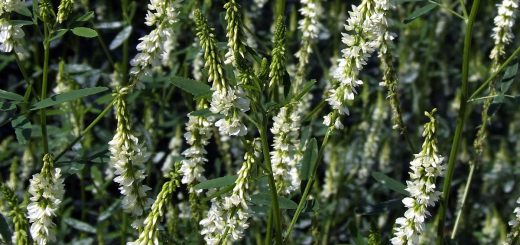#095: Coprine
Coprine is a fascinating molecule that is technically not poisonous. So why is it listed along with other mushroom toxins? Because it can result in poisoning, but only if you consume a completely different toxin afterward, namely alcohol. If you drink alcohol after eating a coprine-containing mushroom, you can expect to experience flushing of the face and neck, a rapid and/or irregular heartbeat, headache, nausea, and vomiting, and you may also experience difficulty breathing and tingling or numbness in the limbs or hands. These symptoms last as long as the alcohol is in your system, which may be a while since coprine interferes with the body’s process of removing alcohol.
Coprine is found in a number of inky caps in the Coprinopsis genus. In North America, the main culprit is C. atramentarius, commonly known as The Inky Cap. Inky caps in general are recognized by their gills and pileus, which turn into black goo from the edges inward (the mycological term for this is “deliquesce”). For the most part, inky caps are considered to be nonpoisonous. In fact, you can eat coprine-containing mushrooms without experiencing any ill effects. Coprine only causes symptoms when you drink alcohol after or at the same time as you consume coprine. Coprine-like symptoms have been seen after eating other mushrooms, but these have not been found to contain coprine. These mushrooms probably have similar compounds that work in a similar manner.
Coprine’s chemical name is: N5-1-hydroxycyclopropyl-L-glutamine. In other words, the amino acid Glutamic Acid is connected to a funky molecule resembling an amino acid that has been tied into a loop. Once inside your body, coprine is split apart into glutamic acid and a compound called 1-aminocyclopropanol. This compound is actually very easy to draw. First, draw an equilateral triangle. Then, draw two lines coming off of the top point of the triangle like an old TV antenna. At the end of the left-hand “antenna,” write H2N (the “amino-” group). At the end of the right-hand “antenna,” write OH (the “-ol” group). But what is this diagram showing you? Each line is a single covalent bond between atoms and each point on the triangle is a carbon atom. Carbon atoms can form four bonds, so the carbons connected by only two lines are also bound to two hydrogen atoms (which are usually omitted from drawings). 1-aminocyclopropanol is based on the molecule propane. Propane is composed of a straight chain of three carbon atoms, with the end carbons bound to three hydrogens and the middle carbon bound to two hydrogens. In cyclopropane, the two end carbons are bound together, making a three-carbon triangle with each carbon bound to two hydrogen atoms. 1-aminocyclopropanol has two substitutions on its cyclopropane ring: and amino group (NH2) and an ol group (a.k.a. a hydroxyl group, OH). The “1” at the beginning of the name indicates that these two groups are bound to the same carbon atom. 1-aminocyclopropanol may be a long name, but it actually tells you the exact structure of the compound!
Now, back to biology. 1-aminocyclopropanol causes toxic affects by deactivating the enzyme aldehyde dehydrogenase (ALDH). ALDH is a key enzyme in the process of breaking down the toxic compound ethanol (the alcohol in alcoholic beverages). First, ethanol is broken down by the enzyme alcohol dehydrogenase into acetaldehyde. Second, ALDH breaks down acetaldehyde into the non-toxic molecules acetate and carbon dioxide. Inhibition of ALDH causes acetaldehyde to accumulate in the body, thus causing the poisoning symptoms. It takes about 30 minutes for coprine to break down into 1-aminocyclopropanol, so small amounts of alcohol consumed at the same time as eating coprine may not cause any symptoms. However, there are reports of symptoms occurring even when the alcohol was consumed shortly before eating coprine-containing mushrooms. 1-aminocyclopropanol can persist in the body for as long as five days – and perhaps even longer – so symptoms can appear long after the initial mushroom “poisoning.”
There is another molecule known to cause nearly the exact same set of symptoms: disulfiram, which is marketed under the brand name Antabuse. Oddly enough, Antabuse is prescribed in order to cause these symptoms when the drug is combined with alcohol (or, more recently, cocaine). The positive punishment provided by the unpleasant symptoms will hopefully help addicts overcome their addiction. Can coprine be used in the same way? Maybe, but only for alcohol addiction. Coprine does not interfere with the dopamine pathway, so it could not be used to treat other addictions. Additionally, coprine has been shown to be harmful to bone marrow and testicles in animal models at very high doses. Due to these documented effects, it is probably best to avoid eating coprine, at least until we better understand the physiological effects of this toxin.
See Further:
http://naturespoisons.com/2014/04/10/coprine-alcohol-poisoning-from-mushrooms/
http://emedicine.medscape.com/article/817759-overview#showall
http://www.botany.hawaii.edu/faculty/wong/BOT135/Lect18.htm
http://academic.evergreen.edu/projects/mushrooms/phm/s19.htm









![#011: Characteristics of Kingdom Fungi [Archived]](https://www.fungusfactfriday.com/wp-content/themes/hueman/assets/front/img/thumb-small-empty.png)



1 Response
[…] meal. Some coprinoid species, such as the “edible” C. atramentaria, contain the toxin coprine (FFF#095) and can make you sick if you drink alcohol with your mushrooms. Panaeolus includes some species […]